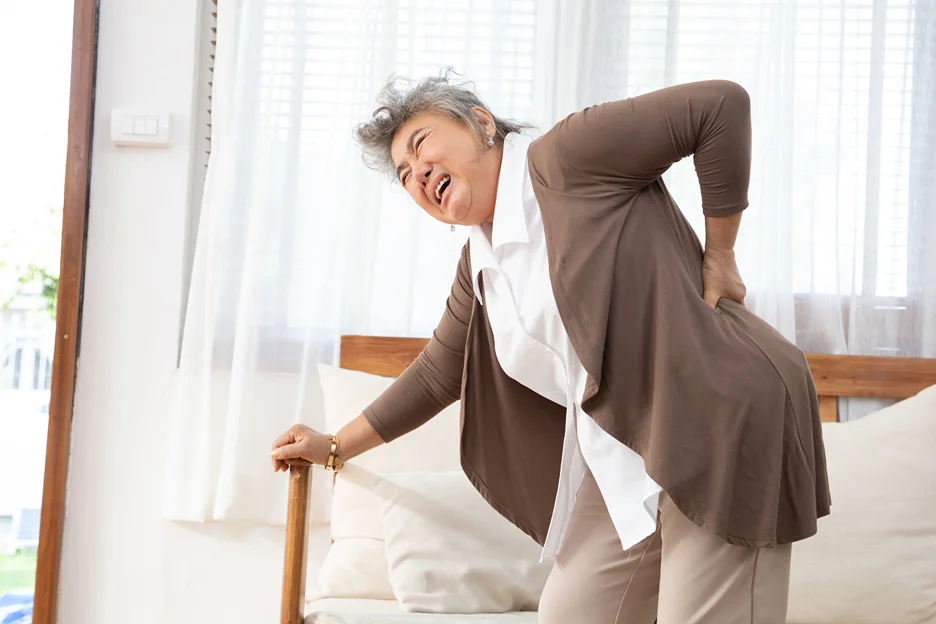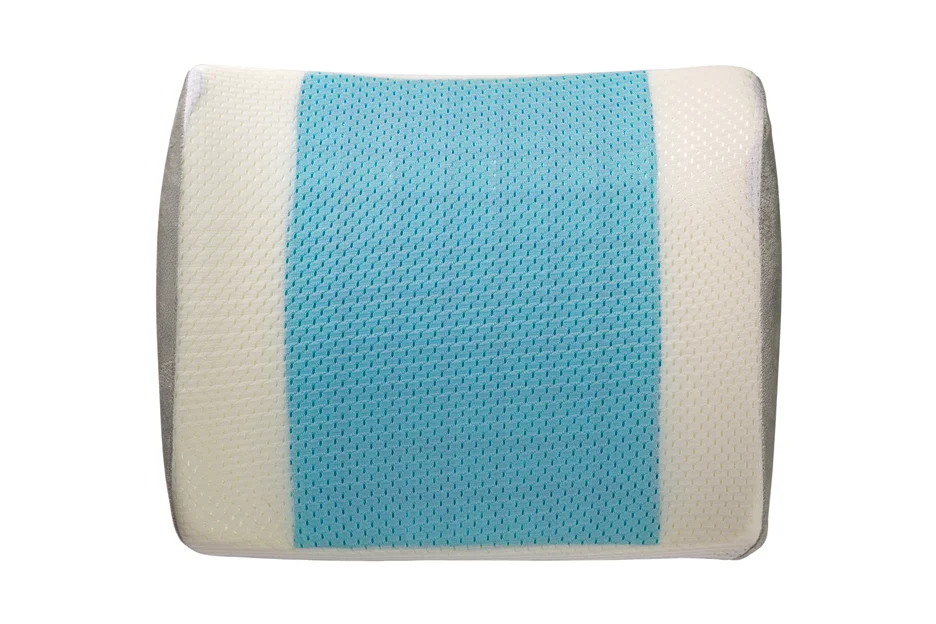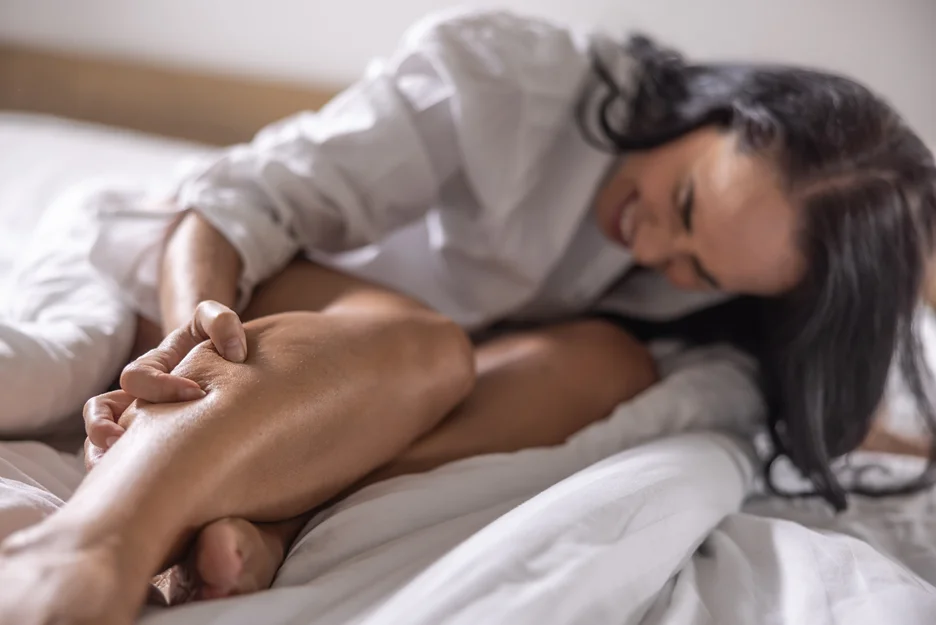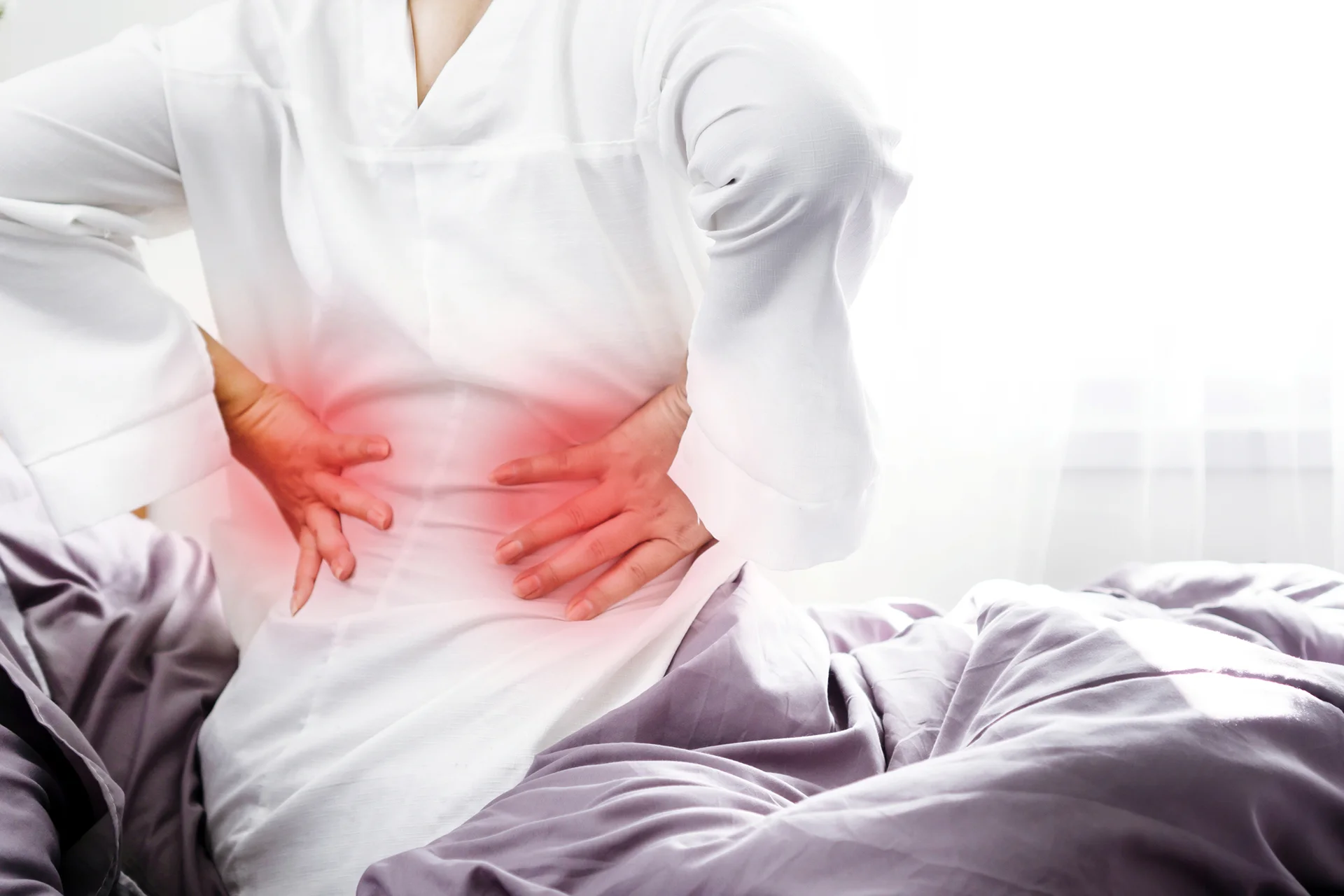Learn How to Break Free From the Pain and Take Back Your Life
Spinal stenosis and sciatica often go hand-in-hand, but what’s the connection?
Spinal stenosis refers to the narrowing of spaces within the spine, most often in the lower back and neck region. This narrowing puts pressure on the nerves traveling through the spine, including the sciatic nerve running from the lower back down the leg. The result? Sciatica – that sharp, shooting leg pain.
The good news is that with proper education and support, spinal stenosis sciatica can be managed.
At Kaly, we want to empower you to take control of your condition. Read on as we explore spinal stenosis, what causes it, how it leads to sciatica, and most importantly – your treatment options for finding relief.
You don’t have to suffer in silence. We’re here to help you on your path to a life unburdened by spinal stenosis and sciatica.
What is the difference between spinal stenosis and sciatica?

First, let’s clearly define these terms.
Spinal stenosis refers to an abnormal narrowing of the spaces within your spine, which can put pressure on the nerves traveling through the impacted area. Lumbar spinal stenosis affects the lower back, while cervical spinal stenosis impacts the neck.
Sciatica, on the other hand, is characterized by radiating pain that runs from your lower back through your hips and down your leg along the sciatic nerve pathway. The hallmark sciatica symptom is leg pain, which may be accompanied by numbness, weakness or tingling.
So what’s the connection? Lumbar spinal stenosis can lead to compression of the sciatic nerve roots, causing sciatica pain and other symptoms. Simply put, spinal stenosis is the underlying structural issue, while sciatica is a condition that may result from lumbar spinal stenosis putting pressure on the sciatic nerve.
Can spinal stenosis directly cause sciatica?
Yes, lumbar spinal stenosis can have a direct causal relationship with sciatica. When the narrowing within the spinal canal compresses the nerve roots that make up the sciatic nerve, irritation, inflammation and nerve damage can occur. This leads to the telltale radiating leg pain and other sciatica symptoms.
The sciatic nerve is the largest single nerve in the body. It originates in the lower back as nerve roots exiting from the spine, combining together to run down each leg. Compression of these nerve roots is what triggers sciatica in people with lumbar spinal stenosis. The more narrowed the spinal spaces, the greater the chance for pinched sciatic nerve roots.
How can I differentiate between pain caused by sciatica and other types of back pain?
Figuring out if your pain is sciatica or general back pain can be tricky. Here are a few key ways to tell the difference:
| Characteristic | Sciatica Pain | General Back Pain |
| Location | Radiates down the leg following the sciatic nerve path | Typically isolated to the lower back area |
| Leg Pain | Tingling, burning, numbness, or shooting pains into the foot | Usually impacts just the back |
| Trigger Points | Aggravated by certain movements/positions, like prolonged sitting | Can be more constant or vary with different activities |
| Walking | Pain often increases with walking | Pain may decrease with walking |
If your pain travels down your leg and seems triggered by sciatic nerve irritation, spinal stenosis sciatica is likely the cause. Connect with your doctor for an official diagnosis.
How can someone with spinal stenosis sciatica relieve their pain at home?

Living with spinal stenosis sciatica can be extremely uncomfortable and disruptive to your daily life. When a flare-up strikes, try these pro tips to find some relief:
- Alter positions frequently between sitting, standing and walking. Staying in one position for too long can compress the sciatic nerve.
- Apply a cold or hot compress to help reduce inflammation and muscle tension. Use whatever temperature feels best to you.
- Try sciatica stretches like knee-to-chest, figure four and reclining pigeon to gently open up your lower back. Hold for 30 seconds.
- Consider an over-the-counter pain medication like ibuprofen to relieve acute sciatica pain and swelling.
- Use good posture and ergonomic back support, like lumbar cushions, when sitting to avoid pinching the sciatic nerve.
- Get adequate rest and sleep to allow your body to heal itself more effectively.
- Reduce activities that aggravate your sciatica pain until symptoms subside.
Experiment to find the right relief combo for your spinal stenosis sciatica flares. But seek emergency medical care for any loss of bowel/bladder control or sudden weakness.
What are the most effective exercises for managing spinal stenosis and sciatica?
Along with momentary pain relief tricks, maintaining a regular exercise routine is vital for ongoing sciatica management. The best exercises for spinal stenosis sciatica aim to gently strengthen and stretch the muscles supporting your lower back to take pressure off the sciatic nerve.
Here are our top exercise picks for sciatica caused by spinal stenosis:
- Bridging – Boosts core and glutes to stabilize your spine. Do 2 sets of 10-15 reps.
- Mini-squats – Strengthens legs and takes strain off your back. Focus on good form.
- Knee to chest – Pulls knees in one at a time to stretch your lower back. Hold for 30 seconds each.
- Calf and hamstring stretches – Opens up tight leg muscles pressing on sciatic nerve. Hold 30 seconds.
- Wall sits – Targets quadriceps and core with back support against wall. Aim for 30-60 seconds.
- Lower back rotation – Twists spine carefully to increase mobility. 5-10 rotations per side.
- Walking – Low-impact activity that helps reduce stiffness. 30 minutes daily.
Speak to a physical therapist to develop an exercise regimen tailored to your unique needs. Consistency is key to maintaining long-term spinal stenosis sciatica relief.
Which treatment options are available for sciatica caused by spinal stenosis?
Beyond home remedies and exercise, several medical treatment alternatives exist for stubborn spinal stenosis sciatica:
Epidural Steroid Injections
Cortisone injections are delivered into the epidural space around your spine to decrease nerve inflammation. Effects last ~3 months.
Medications
Anti-inflammatory drugs, muscle relaxers, antidepressants and anticonvulsants to control sciatica pain signals.
Spinal Decompression
Non-surgical traction therapy applied to the lower back to take pressure off compressed nerves.
Physical Therapy
Specific stretches, exercises and modalities like heat/cold therapy to improve mobility.
Chiropractic Care
Spinal manipulation and massage techniques to improve alignment and reduce nerve impingement.
Acupuncture
Insertion of ultra-thin needles into key pressure points to relieve pain and muscle spasms.
Talk to your doctor regarding the benefits and risks of each option above for the treatment of your spinal stenosis sciatica. The goal is to start with less invasive methods before considering surgery.
Can cervical stenosis also lead to sciatica-like symptoms?
Sciatica specifically refers to pain radiating down the leg along the path of the sciatic nerve, which runs from the lower back. So true sciatica implies a lumbar spinal issue.

However, cervical (neck) spinal stenosis can mimic sciatica symptoms through a condition called cervical radiculopathy. Pressure on nerves in the cervical spine can refer pain into the shoulder, arm and even down the leg.
This pseudo-sciatica often feels less severe than true sciatica and typically impacts just one side of the body. Those with severe cervical stenosis may experience bilaterally radiating pain into both legs that can be hard to distinguish from classic sciatica.
Careful diagnosis of the exact compressed nerve root is important to determine if leg pain is coming from the neck versus the lower spine. Imaging and physical exams help identify if the cervical spine is the root cause of your sciatica-like pain.
We’ll Be By Your Side
At Kaly, we offer a wealth of resources and support to help you develop an effective spinal stenosis sciatica treatment plan.
You don’t have to let spinal stenosis sciatica control your life. Learn how to manage your symptoms, find relief, and get back to living a full, active life! We’re here to help every step of the way.
